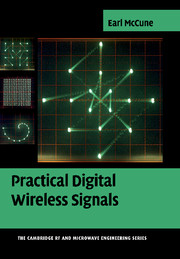Book contents
- Frontmatter
- Contents
- Preface
- Definitions and acronyms
- Terminology and notation
- 1 Keying, states, and block diagram construction
- 2 Common issues and signal characterization
- 3 Important details on results from Shannon, Nyquist, and others
- 4 Digital amplitude modulation (ASK)
- 5 Digital frequency modulation: FSK
- 6 Digital phase modulation: PSK
- 7 Combined digital modulations: QAM and OFDM
- 8 Spread spectrum
- 9 Wireless propagation and antenna fundamentals
- 10 Principles of coding
- 11 Multiple access techniques
- 12 Signal tradeoffs and system evolution
- Tutorial Appendices
- Appendix A Phasor review
- Appendix B Decibels (dB) really are simple
- Appendix C Analog modulation basics
- Appendix D Quadrature modulation and demodulation principles
- Appendix E Polar modulation and demodulation principles
- Appendix F The derivative-zeroed pulse family
- Appendix G Selected DWC standards and their modulations
- Index
- References
Appendix F - The derivative-zeroed pulse family
Published online by Cambridge University Press: 04 August 2010
- Frontmatter
- Contents
- Preface
- Definitions and acronyms
- Terminology and notation
- 1 Keying, states, and block diagram construction
- 2 Common issues and signal characterization
- 3 Important details on results from Shannon, Nyquist, and others
- 4 Digital amplitude modulation (ASK)
- 5 Digital frequency modulation: FSK
- 6 Digital phase modulation: PSK
- 7 Combined digital modulations: QAM and OFDM
- 8 Spread spectrum
- 9 Wireless propagation and antenna fundamentals
- 10 Principles of coding
- 11 Multiple access techniques
- 12 Signal tradeoffs and system evolution
- Tutorial Appendices
- Appendix A Phasor review
- Appendix B Decibels (dB) really are simple
- Appendix C Analog modulation basics
- Appendix D Quadrature modulation and demodulation principles
- Appendix E Polar modulation and demodulation principles
- Appendix F The derivative-zeroed pulse family
- Appendix G Selected DWC standards and their modulations
- Index
- References
Summary
In signal processing applications such as designing a signal for low near-far interference, far-off spectral rolloff is desired. From Fourier analysis it is known that the number of zeroed derivatives at the endpoints of the (filtering) pulse waveform increases the rate of the rolloff of the resulting spectrum sidelobes [F.1]. It is therefore useful to have a set of pulse functions that have smooth leading and trailing transitions. Other applications include windowing for spectral “containment” [F.2] [F.3], and reducing the timing sensitivity of a filtered digital data stream such that the flatness at the optimum eye opening can be maximized.
Expanding on the method of [F.3], a general method is derived for zeroing a settable number of derivatives of a pulse waveform at its leading and trailing points to achieve this smoothing. This produces maximally flat pulse leading and trailing edges, by similarity to the maximal flatness characteristics of the Butterworth family of analog filters [F.4].
The organization of this appendix is as follows. Following the introduction, the derivative-zeroed pulse function family is derived in Section F.1. Section F.2 discusses the evaluation of the Fourier transforms for these pulses. In Section F.3 the first five members of the DZ pulse family are illustrated, showing gaps in the coverage of the cosine-powered windows. These gaps are filled by adding the closely related DZE pulse family, which is derived in Section F.4.
- Type
- Chapter
- Information
- Practical Digital Wireless Signals , pp. 379 - 388Publisher: Cambridge University PressPrint publication year: 2010

